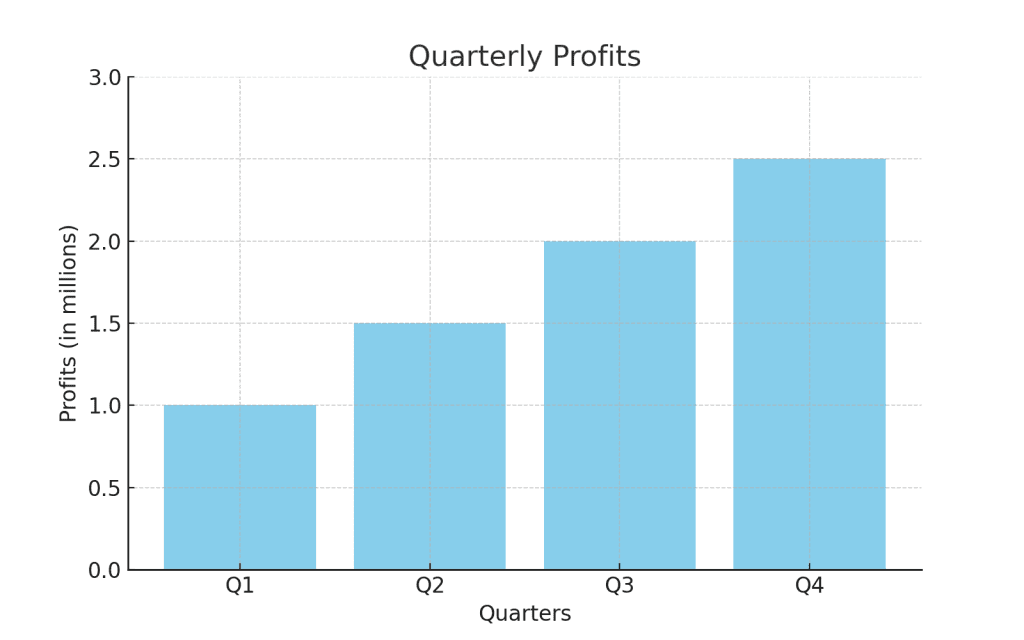How to Present to Executives: [Mastering Effective C-Suite Communication]

Presenting to executives can be a high-stakes challenge that requires a distinct approach compared to presenting to other audiences.
When you’re in front of senior executives, you need to understand that these individuals are often short on time, have significant influence on the success of your ideas, and make critical business decisions daily.
Your presentation must be concise, directly aligned with the business’s strategic objectives, and demonstrate clear value.
To engage executives effectively, your presentation should be structured in a way that quickly captures their attention and conveys your main points with precision.
Every slide, every piece of data, and every strategic recommendation should support the central message and be geared towards the executive’s perspective and priorities.
The ability to anticipate and address potential questions or concerns is also crucial in maintaining their engagement and support.
Key Takeaways
- Craft your presentation with a clear, concise structure that aligns with strategic business objectives.
- Anticipate and directly address the priorities and concerns of the executive audience.
- Deliver with confidence and prepare to engage in a high-level business discussion following the presentation.
Understanding the Executive Mindset
To effectively present to executives, you must gain insight into how they think and what they value.
Your presentation should align with their decision-making patterns and respect their time constraints.

Insights into Executive Decision-Making
Executives tend to focus on outcomes and ROI.
They prefer data-driven decisions, so include relevant metrics and statistics. When you present information:
- Be Concise: Executives often prefer summaries over details.
- Highlight Relevance: Demonstrate how your information directly impacts business goals.
- Prioritize: Rank information by strategic importance.
Managing Expectations and Time Constraints
Executives typically have limited availability, so it’s crucial to manage the duration of your presentation effectively.
To meet these time constraints:
- Plan Ahead: Aim for a 30-minute window, leaving room for discussion.
- Structure Your Points: Use bullet points to organize your slides for quick reference.
- Set Realistic Goals: Do not promise more than you can deliver. Be specific and realistic about expected outcomes.
Effective Presentation Structure and Content
When presenting to executives, your ability to structure content effectively and deliver a clear, concise narrative is critical.
An impactful presentation should grab attention from the start, distil complex data and analysis, and leave a memorable summary that drives decision-making.

Crafting a Compelling Opening Statement
Your opening statement should immediately engage your audience. Begin with a bold fact, a relevant story, or a pressing challenge that aligns with the executives’ interests and the goals of your presentation.
Building a Concise and Coherent Narrative
Your narrative must be logical and straightforward, guiding your audience through the presentation without unnecessary detours.
Use:
- Short paragraphs and bullet points to outline main ideas.
- Italicized text for emphasis on critical connections between points.
Highlighting Key Data and Analysis
Present data and analysis clearly, focusing on what is most relevant to your message.
Use tables and charts for clarity, and avoid overloading slides with information.
Prioritize data that supports your recommendations and relates directly to the executives’ concerns.
| Metric | Data Point |
|---|---|
| Key Performance | XX% |
| Financial Projection | $XXmil |
| Market Growth | XX% |
Synthesizing a Clear and Impactful Summary
Conclude your presentation with a summary that encapsulates the key points.
Reiterate the solution or action you advocate for, making sure it is backed by your data and analysis. Leave your audience with a clear understanding of the impact and a call to action.
Presentation Design and Delivery Techniques
In this section, you’ll learn how to create compelling presentations using strong visuals, storytelling, and powerful delivery.
Your aim is to captivate your audience and deliver clear insights effectively.

Leveraging Visuals and Reports
When presenting to executives, your visuals and reports should be concise and data-driven.
Use tables to compare figures at a glance:
| Q1 Profits | Q2 Profits | Q3 Profits | Q4 Profits |
|---|---|---|---|
| $1M | $1.5M | $2M | $2.5M |
Incorporate graphs that illustrate trends, such as line or bar charts, which are easily digestible.

Remember to limit each slide to one key idea to keep your reports focused.
Mastering Storytelling to Maintain Attention
Your presentation will resonate when you connect facts with a narrative. A good story has a clear progression:
- Set the context (Beginning)
- Present the challenge (Middle)
- Deliver the resolution (End)
Weave in relevant anecdotes or case studies that align with the executives’ interests. This strategy ensures you retain the audience’s attention by making the data relatable.
Enhancing Vocal and Physical Presence
Your vocal tone and body language are crucial presentation skills.
Speak with a clear, steady voice, and use pauses to emphasize key points.
Stand confidently; moderate hand gestures can emphasize what you say, but avoid excessive movements that may distract.
Maintain eye contact with different members of the audience to engage them.
Practicing in front of a mirror or video recorder can help in fine-tuning your delivery.
Preparing for Executive Interactions
Successful interactions with executives depend on your meticulous preparation and the ability to anticipate and address their concerns confidently.

Anticipating Possible Questions and Objections
To be well-prepared, you should start by researching common concerns that executives might have regarding your presentation topic.
Create a list of possible questions and objections you expect, and then craft well-thought-out responses.
- Market Trends: How does your proposal align with current market trends?
- ROI: What is the expected return on investment?
- Timeframe: What timelines are associated with implementation and results?
Understanding the Importance of Preparation and Practice
Preparation is not just about content; it’s also about delivery.
Devote significant time to practice your presentation, focusing on clarity and brevity to ensure your message is compelling.
Use mock presentations to refine your performance and consider the following aspects:
- Body Language: Maintain eye contact and use confident gestures.
- Voice Modulation: Use a clear and firm tone to convey confidence.
Developing Responses to Risks and Competition
Being prepared means you can confidently speak about risks and how you plan to mitigate them.
Additionally, understand your competition and be ready to explain how your proposal stands out.
| Risk Factor | Mitigation Strategy |
|---|---|
| Technological Disruptions | Staying updated with tech trends |
| Market Volatility | Diversified strategies |
Acknowledge competitive pressures and highlight your unique value proposition:
- Innovation: How is your solution innovative compared to others?
- Customer Impact: How does it better serve the customer’s needs?
Navigating the Business Context
When presenting to executives, understanding the business context is crucial.
Your presentation should reflect a deep grasp of the environment in which the organization operates and the various stakeholders involved.

Presenting to Multiple Stakeholders
In any organization, you must recognize and tailor your message to a diverse set of stakeholders.
Be prepared to articulate how your insights align with the interests of different departments, ranging from finance to marketing and human resources.
Create a table to map out stakeholder concerns to ensure you address them in your presentation:
| Stakeholder Group | Key Concerns |
|---|---|
| Finance | Budget, ROI |
| Marketing | Brand image, market reach |
| Human Resources | Staffing, company culture |
| Sales | Revenue targets, sales strategies |
Strategies to Align with Organizational Goals
Strategize your presentation to reflect organizational goals.
It is imperative to be informed about short-term objectives and long-term missions.
Begin by listing the pertinent organizational goals; then, directly link your points to illustrate how your proposal advances these aims. Use bullet points for clarity:
- Short-term objective: Showcase how your initiative can impact the organization’s quarterly performance.
- Long-term mission: Connect the initiative to the overarching mission statement of the organization.
Utilizing SWOT Analysis for Strategic Insights
A SWOT analysis (Strengths, Weaknesses, Opportunities, Threats) offers strategic insights into the organization and is a tool that can greatly inform your presentation.
When you present, highlight:
- Strengths: Key assets you can leverage.
- Weaknesses: Challenges within the organization your initiative might address.
- Opportunities: External conditions you can capitalize on.
- Threats: Potential risks that decision-makers should be aware of.
Implementing a SWOT analysis shows executives that you’ve conducted a comprehensive evaluation and are presenting data-driven recommendations.
Advanced Techniques and Resources
To excel in presenting to executives, it’s crucial to continuously improve your skills.
This can be done through specialized training resources and professional networks that cater to executive-level communication.

Leveraging Online Leadership Training
Online leadership training can significantly enhance your presentation proficiency.
Harvard ManageMentor® offers modules on presentation skills tailored to executive audiences.
You can also explore HBR Learning, which provides expert-led courses.
These resources teach you to refine your delivery, understand your audience, and convey compelling narratives.
- Modules to Explore:
- Persuasive Communication
- Leadership Fundamentals
- Strategic Thinking
Engaging with Business Education Platforms
Business education platforms such as LinkedIn Learning feature courses that pinpoint the nuances of executive communication.
By taking these courses, you receive advice from seasoned business leaders and communication experts.
- Top Picks on LinkedIn Learning:
- Communicating with Confidence
- Influencing Others
- Executive Presence on Video Conference Calls
Finding Value in Professional Networks
Engaging with professional networks exposes you to diverse perspectives and feedback from peers.
LinkedIn groups dedicated to executive presentation offer discussions, webinars, and resources to refine your approach.
Cultivate connections with professionals who can provide constructive critique on your presentation style.
- Networking Strategies:
- Join LinkedIn groups focused on leadership communication.
- Attend webinars and virtual events on executive presence.
- Connect with mentors through your professional network.
After The Presentation
Once you complete your presentation, your focus should shift to capitalize on the momentum you’ve created.
This period is crucial for reinforcing your message and facilitating the necessary next steps.

Gathering Feedback for Continuous Improvement
Actively seek feedback from the executives immediately following your presentation.
Make a list of specific questions that can elicit constructive criticism. Present these in a follow-up email or through a feedback form.
Structure the feedback to align with the core topics of your presentation.
- Specificity: Query about which parts of the presentation were most engaging or in need of clarification.
- Impact Measurement: Request insights on the perceived impact of your proposed solutions or ideas.
- Future Preparations: Ask how you could better tailor information for future discussions.
Following Up with Stakeholders and Recommendations
Promptly following up with stakeholders demonstrates your commitment to the proposed initiatives.
Summarize key takeaways from the presentation and outline any agreed-upon action items.
Use a table to communicate the next steps clearly:
| Stakeholder | Recommendation | Impact | Proposed Resolution |
|---|---|---|---|
| Sales Dept. | Improve CRM integration | Enhanced customer tracking | Set up a task force |
| HR Division | Implement leadership training | Boost employee morale | Schedule training by Q3 |
| IT Team | Upgrade security protocols | Reduced risk of breaches | Review current systems by Q4 |
Send tailored follow-up communications to maintain relationships, emphasizing how their feedback is valued and incorporated into your plans for moving forward.
Conclusion
When presenting to executives, your success hinges on preparation and clarity.
Remember the following key points:
- Know Your Audience: tailor your content to their interests and level of expertise.
- Be Concise: time is valuable, so get straight to the point with your information.
- Structure Your Presentation: use a clear introduction, body, and end.
Use visual aids to enhance understanding, but ensure they are relevant and support your message.
Practice your delivery to maintain a steady pace and tone.
Be ready to answer questions with confidence, providing evidence for your statements when necessary.
Lastly, follow up promptly with any requested information to show your dedication and professionalism.






